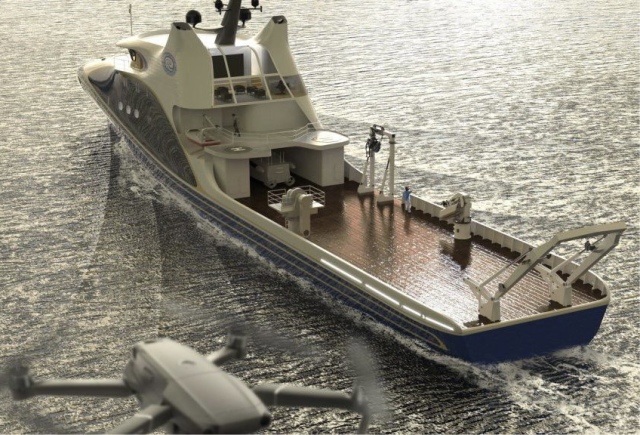The Southern Marine Scientific and Technical Laboratory of Guangdong Province has started the construction of an autonomous research vessel. It should be a floating base that coordinates drones in the air, on the water and under water. According to the Central Television of China, the ship is planned to be put into operation next year.
Several companies are currently engaged in the development of autonomous research vessels. For example, IBM created an autonomous trimaran "Mayflower", which was supposed to pass along the route of the English merchant ship of the same name, collecting information on ocean acidification, microplastics and marine mammals along the way. And Saildrone is going to build a whole fleet of surface robots in order to map the bottom of all the oceans of the Earth over the next ten years.
The Southern Marine Scientific and Technical Laboratory of Guangdong Province signed a contract for the design and construction of an autonomous research vessel with the China Ship Design & Research Center and the Huangpu Wenchong shipyard in December last year. According to this contract, it should be put into operation next year.
The beginning of the construction of an autonomous research floating base became known in July. It received the designation i-ship . With a length of 88.5 meters and a width of 6.1 meters, the i-ship will have a displacement of two thousand tons. The vessel will be able to reach a speed of up to 18 knots and move autonomously or be controlled remotely.
The I-ship is planned to be sent on missions without a crew on board. The vessel will receive the IMOSOS ocean surveillance system, which will allow it to simultaneously conduct research in the air, on the water and under water with the help of more than 50 unmanned systems. Among the latter will be both unmanned aerial vehicles, as well as surface and underwater robots.
The I-ship will be the first Chinese autonomous floating base, but unmanned research vessels have already been developed in China. Earlier we wrote about a Chinese semi-submerged ship with meteorological missiles. It can move in autonomous mode, tracking its position by signals from the BeiDou satellite navigation system.
Vasilisa Chernyavtseva

